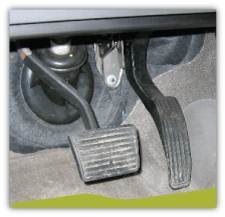
Contributed by: John Perkins - Senior Technical Support Specialist (Retired)
John Perkins is a manufacturing applications expert who has built hundreds of applications to help improve production and part quality. Though John is now retired, we can still answer any questions you may have at inquiries@sciemetric.com.
Question:
Dear John,
We are a manufacturer of gas pedals assemblies. Given the recent press regarding potential problems and recalls related to gas pedals, we’ve noticed that our customers are looking for more assurances about the quality of our assemblies. Is there anything we can do on the line to help increase their confidence in what we ship?
This is definitely a hot topic for OEM manufacturers of all types, not just for those making parts that are in the news today. The reality is that there will be much more push for suppliers such as your company to meet high quality standards and being able to prove it. Fortunately, technology is on your side.
Answer:
Gas pedal assemblies come in many varieties but even a basic gas pedal requires sophisticated auditing of pedal push force, Idle and Idle Off logic control outputs, pedal travel and other inter-related signals. I’m assuming you have some test systems along the line to verify some aspects of quality. Recently I’ve done an application where we connected five sensors to one of our sigPOD units to measure the Idle Hi logic, Idle Lo logic, reference angle, pedal force and pedal position to provide complete signatures of these outputs with the ability to conduct a number of feature checks -- but this is for more of an end-of-line test.
 Checking parts as they’re being assembled is also important and will save you a lot of time. Key however to meeting your customers’ demands is archiving the production information for every part and assembly. This doesn’t mean just serial numbers and basic test results, it means all data related to every process along the assembly line, including process signatures. It used to be a “nice to have” but now with the requirements for complete visibility and traceability it is a must have. The proper analytical tools are also required to make use of the archived information so that you would be able pull reports on any individual parts or series of assemblies and show how they met the spec. In addition, if there was a problem with the parts or a quality spill, you’d be able to trace it through this data much more quickly than you could otherwise.
Checking parts as they’re being assembled is also important and will save you a lot of time. Key however to meeting your customers’ demands is archiving the production information for every part and assembly. This doesn’t mean just serial numbers and basic test results, it means all data related to every process along the assembly line, including process signatures. It used to be a “nice to have” but now with the requirements for complete visibility and traceability it is a must have. The proper analytical tools are also required to make use of the archived information so that you would be able pull reports on any individual parts or series of assemblies and show how they met the spec. In addition, if there was a problem with the parts or a quality spill, you’d be able to trace it through this data much more quickly than you could otherwise.
This kind of visibility and ability to respond quickly is what manufacturers want from their partners.

